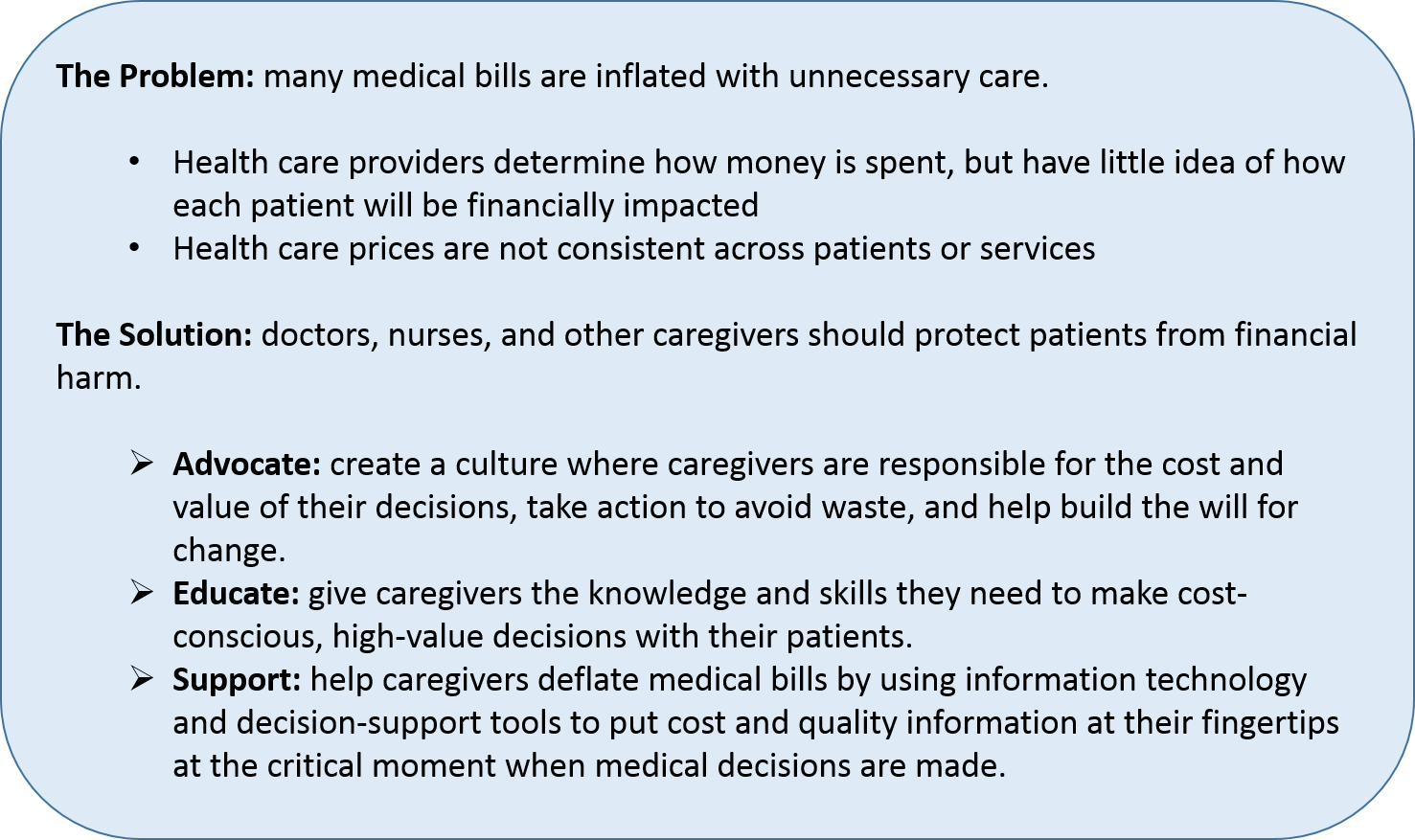Cost of Health Care
A goal of health reform is to increase access. A major goal of the ACA are to Increase insurance coverage through Medicaid expansion, state health exchanges, and the individual mandate.. However, a possible unintended consequence of expanding coverage is that the shortage of primary care physicians will worsen as a result of an increase in the number of individuals trying to obtain care (demand) without increasing the already inadequate number of PCPs (supply). In addition, by providing more people with coverage, there will be an increase in care-seeking behavior and an increase of total health care costs.
The hope is that increased coverage will improve the health of the population, but will this save money in the long run? This is unclear.Massachusetts began a process of health reform several years ahead of the ACA. The first phase focused on increasing access (health insurance coverage). More people are covered now, and it is costing more. The next phase in Massachusetts is to contain cost, but it is too early to know if this will succeed.
"Cost" in the health care arena has different meanings depending on one's perspective, specialty, and environment.
- Consumers might think of cost as the "price" we have to pay when we are presented with a physician's bill, or insurance premiums.
- The government looks at how much our country spends on health care expenditures for health insurance, organizations and institutions that deliver health services, pharmaceuticals, medical equipment, supplies, research costs, and the development of new technologies.
- Another perspective comes from the providers themselves when considering salaries, capital and other operational costs.
|
Some Observations About the Cost of Health Care "Perhaps the most difficult long-term challenge facing Obamacare is cost control. The ACA does contain substantial savings in Medicare, but limits on other spending are less robust. The law initiates a broad array of experiments in medical care delivery and payment reform whose success is highly uncertain."
"The costs of the system's current inefficiency underscore the urgent need for a system wide transformation. The committee calculated that about 30 percent of health spending in 2009 -- roughly $750 billion -- was wasted on unnecessary services, excessive administrative costs, fraud, and other problems. Moreover, inefficiencies cause needless suffering. By one estimate, roughly 75,000 deaths might have been averted in 2005 if every state had delivered care at the quality level of the best performing state." Institute of Medicine, Transformation of Health System Needed to Improve Care and Reduce Costs Press release, 9/6/2012
"62.1% of all bankruptcies have a medical cause. Most medical debtors were well educated and middle class; three quarters had health insurance. The share of bankruptcies attributable to medical problems rose by 50% between 2001 and 2007." Himmelstein, David U., et al. "Medical bankruptcy in the United States, 2007: results of a national study", The American Journal of Medicine 122.8 (2009): 741-746.
"Just as the patient safety movement helped caregivers think about how to prevent unintended harm, a new movement is needed to help caregivers think about unintended financial harms as well." Mission statement, Costs of Care organization |
|
Paying Till It Hurts: Why American Health Care Is So Pricey
Listen to the following piece on the cost of medical care in the US (from NPR) http://www.npr.org/2013/08/07/209585018/paying-till-it-hurts-why-american-health-care-is-so-pricey |
The Costs of Care Project
Costs of Care is a non-profit group dedicated to "transforming American healthcare delivery by empowering patients and their caregivers to deflate medical bills." High-value medical decisions should benefit patients' health, their finances, and decreases costs to the system.

According to the Researchers:
Health economist Ewe E. Reinhardt writes in the Journal of the American Medical Association (2013) that "the often advanced idea that American patients should have "more skin in the game" through higher cost sharing, inducing them to shop around for cost-effective health care, so far has been about as sensible as blindfolding shoppers entering a department store in the hope that inside they can and will then shop smartly for the merchandise they seek."
There are two basic problems with expecting consumers to choose high quality care at a reasonable cost.
- Lack of price transparency: It is very difficult to find out how much a medical service will cost for a consumer. First, the institutions often do not make it easy to acquire information on the charge of services. Second, the charge is generally not the actual price to be paid (payment). Third, the price to be paid varies across payors. Fourth, the consumer portion of the price depends on design of his/her specific insurance plan, including progress towards the deducible for that calendar year.
- Lack of availability of information on quality. Generally speaking, consumers know less about medical care and treatment options than health providers. We call this information asymmetry. Even if consumers had access to standardized data on quality of care they would need the clinical knowledge to understand and interpret this information.
Would any other business survive if it behaved like a hospital? Watch this video for an example of a customer service model that would not survive in a competitive hotel environment.
|
What if Hotels Billed Like Hospitals?
|
The model in health care is unacceptable, but provisions of the ACA do require increased uniformity and transparency of information on out of pocket costs for consumers.

